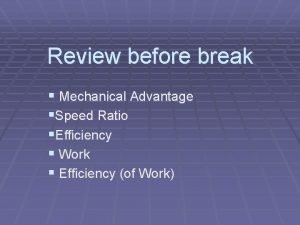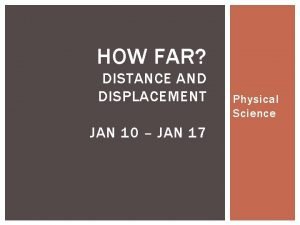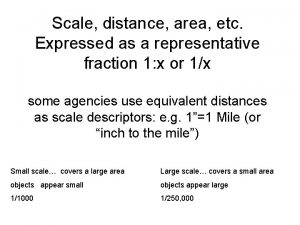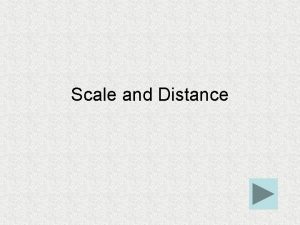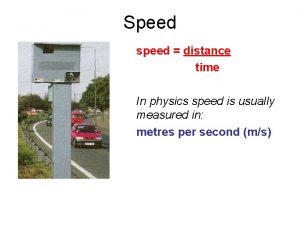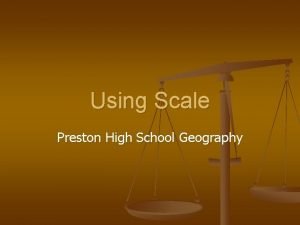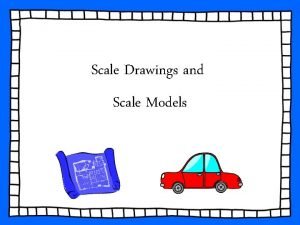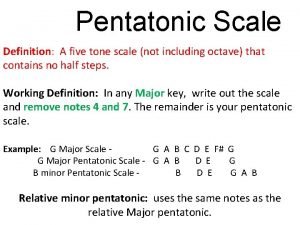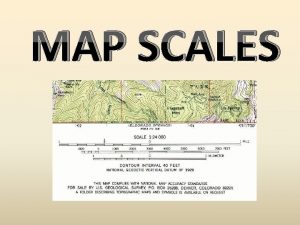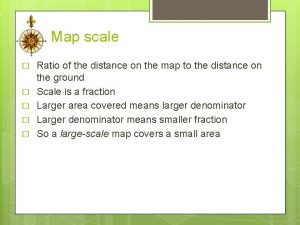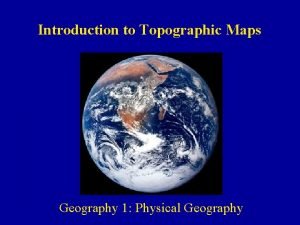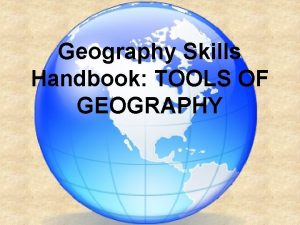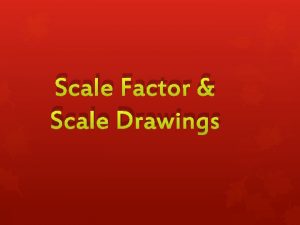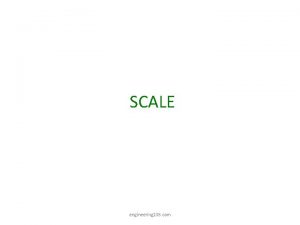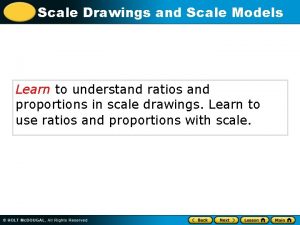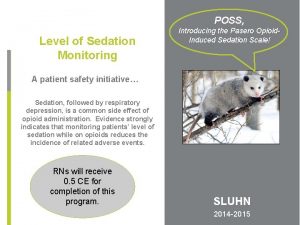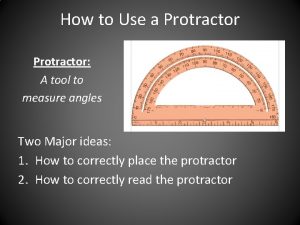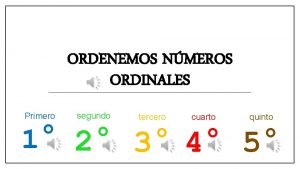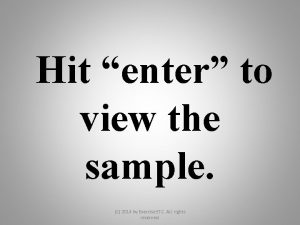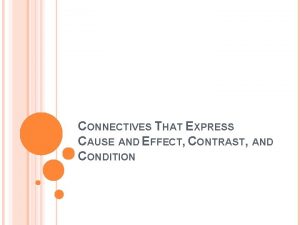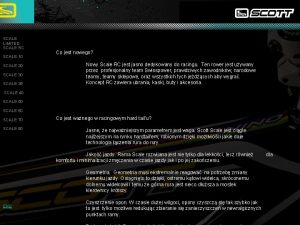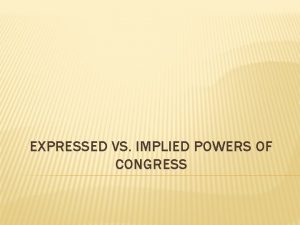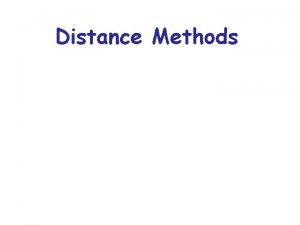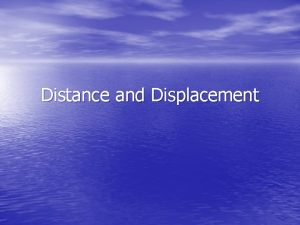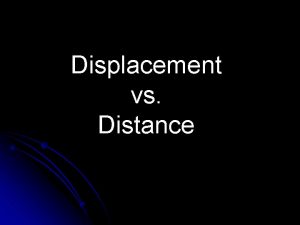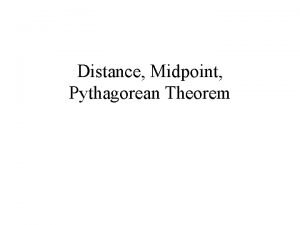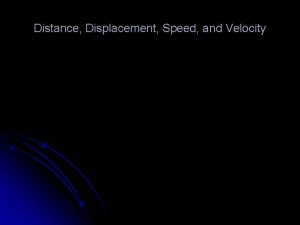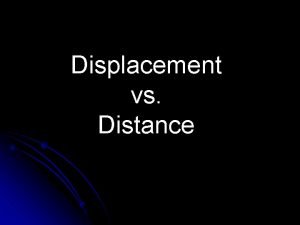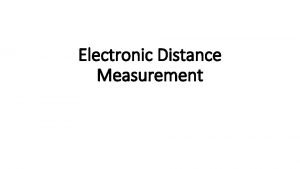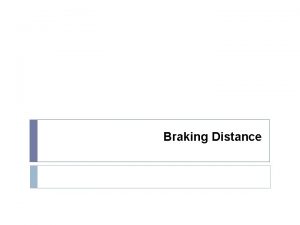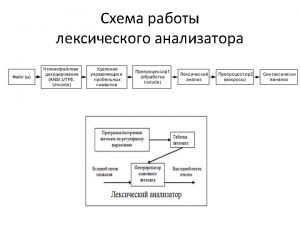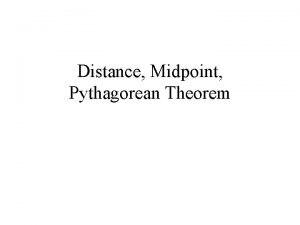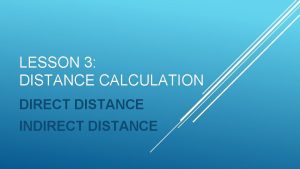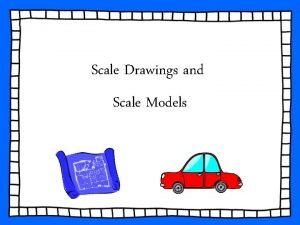Scale distance area etc Expressed as a representative




























- Slides: 28

Scale, distance, area, etc. Expressed as a representative fraction 1: x or 1/x some agencies use equivalent distances as scale descriptors: e. g. 1”=1 Mile (or “inch to the mile”) Small scale… covers a large area Large scale… covers a small area objects appear small objects appear large 1/1000 1/250, 000

Map scale One inch on the map represents One mile on the Earth is represented on the map by • 1: 1, 000 83. 42 feet 63. 36 inches • • • • 1: 1, 200 1: 2, 000 1: 2, 400 1: 2, 500 1: 4, 800 1: 5, 000 1: 6, 000 1: 9, 600 1: 10, 000 1: 12, 000 1: 15, 840 1: 20, 000 186. 24 200 208. 56 400 417. 12 500 750 800 834. 24 1000 1320 1668. 48 52. 80 31. 68 26. 40 25. 30 13. 20 12. 67 10. 56 7. 04 6. 60 6. 34 5. 28 4 3. 17 • 1: 24, 000 2. 64 • • • 1: 25, 000 1: 31, 680 1: 50, 000 2085. 60 0. 500 miles 0. 789 2. 53 2 1. 27 • 1: 62, 500 0. 986 1. 014 • 1: 63, 360 1 1 • 1: 80, 000 1. 26 0. 792 • 1: 100, 000 1. 58 0. 634 • • 1: 125, 000 1: 126, 720 1: 250, 000 1: 500, 000 1. 97 2 3. 95 7. 89 0. 507 0. 5 0. 253 0. 127 • 1: 1, 000 15. 78 0. 063 • • • 1: 2. 000, 000 1: 3, 000 1: 5, 000 1: 10, 000 1: 25, 000 Examples 31. 56 47. 35 78. 91 157. 82 0. 032 0. 021 0. 013 0. 006 • • • USGS 7. 5 quad sheet 1: 24, 000 British Ordnance Survey 'Pathfinder' 1: 25, 000 USGS 15 min quad sheet 1: 62, 500 British Ordnance Survey 'Landranger' 1: 50, 000 USGS 30 x 60 minute quad sheet 1: 100, 000 394. 57 0. 002

• Map scale • • • 1: 1, 000 1: 1, 200 1: 12, 000 1: 15, 840 1: 20, 000 10 meters 12 120 150 200 100 cm 83. 33 8. 33 6. 32 5 • • 1: 24, 000 1: 25, 000 240 250 4. 17 4 • • • 1: 31, 680 1: 50, 000 1: 62, 500 1: 63, 360 1: 80, 000 1: 100, 000 1: 125, 000 1: 126, 720 1: 250, 000 1: 500, 000 317 500 625 634 800 1000 1250 1267 2500 5000 3. 16 2 1. 60 1. 58 1. 25 1 0. 80 0. 79 0. 40 0. 20 10 km 0. 10 20 20 50 100 250 0. 05 0. 03 0. 02 0. 01 0. 004 • 1: 1, 000 One cm on the map represents • • • 1: 2. 000, 000 1: 3, 000 1: 5, 000 1: 10, 000 1: 25, 000 Examples • • USGS 7. 5 quad sheet 1: 24, 000 British Ordnance Survey 'Pathfinder' 1: 25, 000 USGS 15 min quad sheet 1: 62, 500 British Ordnance Survey 'Landranger' 1: 50, 000 • USGS 30 x 60 minute quad sheet 1: 100, 000 One km on the Earth is represented on the map

Photo Scale • RF= f/H • The focal length of the lens divided by the flying height of the platform above the ground. Use the same units (units cancel as scale is unitless) Don’t forget to convert MSL altimiter readings to AGL before calculating scale.


Photo distance/ground distance • RF= pd/gd • Easy to remember. . . • Convert all distances to same units (units cancel) • Use base map to calculate ground distance.

pd/gd contd. • Be aware of map scale when calculating gd! • It is possible to calculate photo scale RF=pd/md*RF of map…. (map distance *photo scale) I NEVER do it this way… my arithmetic is too shaky and I feel a lot more comfortable ‘seeing’ the distance.

Changes in scale across a single photo? • If the elevation of the target area changes, the scale changes • If the platform is subject to yaw-pitch or roll the scale will change across a photograph • Contract photography… specify +/- 3% of vertical and altimeter corrections every 20 minutes (at least)

Objects of a known size… • If you have objects of a known size (or previously measured distances) present on a photograph, these can be used to calculate/verify photo scale. • Athletic fields, railroad gauges, automobiles, aircraft etc.





Area Measurements • Best done from maps Planimetrically correct, known accuracy (national map accuracy standards…. e. g. 1/24000 map objects will be within 20’ of their true location) No distortion due to topographic change • Air photos can be used if the topographic change is less than 100 meters (usual for most applications) OR calculate the scale for each elevation.

Grids • It is possible to calculate areas by overlaying a grid of known dimensions and simply counting the grid cells covered by the feature of interest. • How to handle corners?

Dot Grids

Using a dot grid…. You must know the photo scale Calculate the acres (square meters, hectares) /square inch of the photograph Use a dot grid that provides at least 1 -2 acres/dot Drop the dot grid a couple of times with different orientation and average to get more accurate estimation of area

The polar planimeter • http: //www. nas. com/~kunkel/java/planimtr. htm • And http: //persweb. wabash. edu/facstaff/footer/planimeter/Polar&Linear. htm#How%20 they% 20 work

How Polar Planimeters are Used planimeters are used by moving the tracer point around the boundary of the region being measured. As the tracer point moves the wheel partially rolls and partially slides on the paper, recording its motion perpendicular to the tracer arm. It turns out that when the tracer point returns to the point where it started, the net roll of the wheel is proportional to the area of the region. If a scale attached to the wheel is calibrated appropriately, the area can be read from the scale.

Transects… quick and dirty estimations of land cover • Divide photograph into equal ‘strips’ • Count the approximate number of inches of each strip that are contained in each land cover class… For example: On a 9 X 9 photo, draw 9 equally spaced lines creating 10 strips (90” of transect) use a ruler to measure the woodland cover in a given strip. Woodland covers approximately 30”… 1/3 of the photo is forest… when you know the photo ‘footprint’ (a function of the scale) you can quickly estimate a given land cover type… no equipment necessary.


Digitizing the scanned photo is one of the most accurate methods of area estimation… Scale is critical and the units displayed are (as yet) unknown in their origin!

Measuring irregular line lengths… • The digitizer ‘distance’ function Or the • Opisometer (Op`i*som"e*ter) n. [Gr. backwards + meter. ] An instrument with a revolving wheel for measuring a curved line, as on a map… also called a map wheel or ‘road runner’

Object count/Density • Closely related to texture…. • If objects are regularly spaced, establish a number per unit area and calculate area. e. g. cars in a parking lot • Standard density/area aids… (forestry applications) 5 acre ring, dot size grid, crown density grid (dependent on photo scale!!)



Compass Bearings • Use map relationships to identify angular directions… the angular relationships are well preserved in aerial photography. • If airfields are present every runway is marked with compass heading (magnetic heading) Drop 1 zero… the other end of the runway will be marked with the reciprocal bearing e. g. 1 and 19

This end of the airstrip indicates a bearing of 140 degrees (SE)… what is the reciprocal bearing for the other end of the strip?
 The ratio of input distance to output distance
The ratio of input distance to output distance How is distance different from displacement
How is distance different from displacement The referential and affective function scales
The referential and affective function scales Scale distance formula
Scale distance formula Calculate distance on maps
Calculate distance on maps Speed equals distance divided by time
Speed equals distance divided by time Line scale geography
Line scale geography Types of scale drawing
Types of scale drawing Definition of pentatonic scale
Definition of pentatonic scale Definition of a map scale
Definition of a map scale Map scale ratio
Map scale ratio Topographic map of bangladesh
Topographic map of bangladesh Large scale vs small scale map
Large scale vs small scale map Scale-up vs scale-out
Scale-up vs scale-out Scale up and scale out in hadoop
Scale up and scale out in hadoop Scale drawings/models & scale factor
Scale drawings/models & scale factor Plain scale and diagonal scale
Plain scale and diagonal scale A proportional two-dimensional drawing of an object
A proportional two-dimensional drawing of an object Rass vs poss
Rass vs poss Scale out architecture in big data analytics
Scale out architecture in big data analytics Proper protractor orientation
Proper protractor orientation Inner scale outer scale protractor
Inner scale outer scale protractor Representative fraction
Representative fraction Etc/shadow linux
Etc/shadow linux Opposite to photosynthesis
Opposite to photosynthesis Números primero segundo tercero cuarto quinto
Números primero segundo tercero cuarto quinto 檸檬酸循環
檸檬酸循環 Exercise etc inc
Exercise etc inc Cause and effect
Cause and effect
